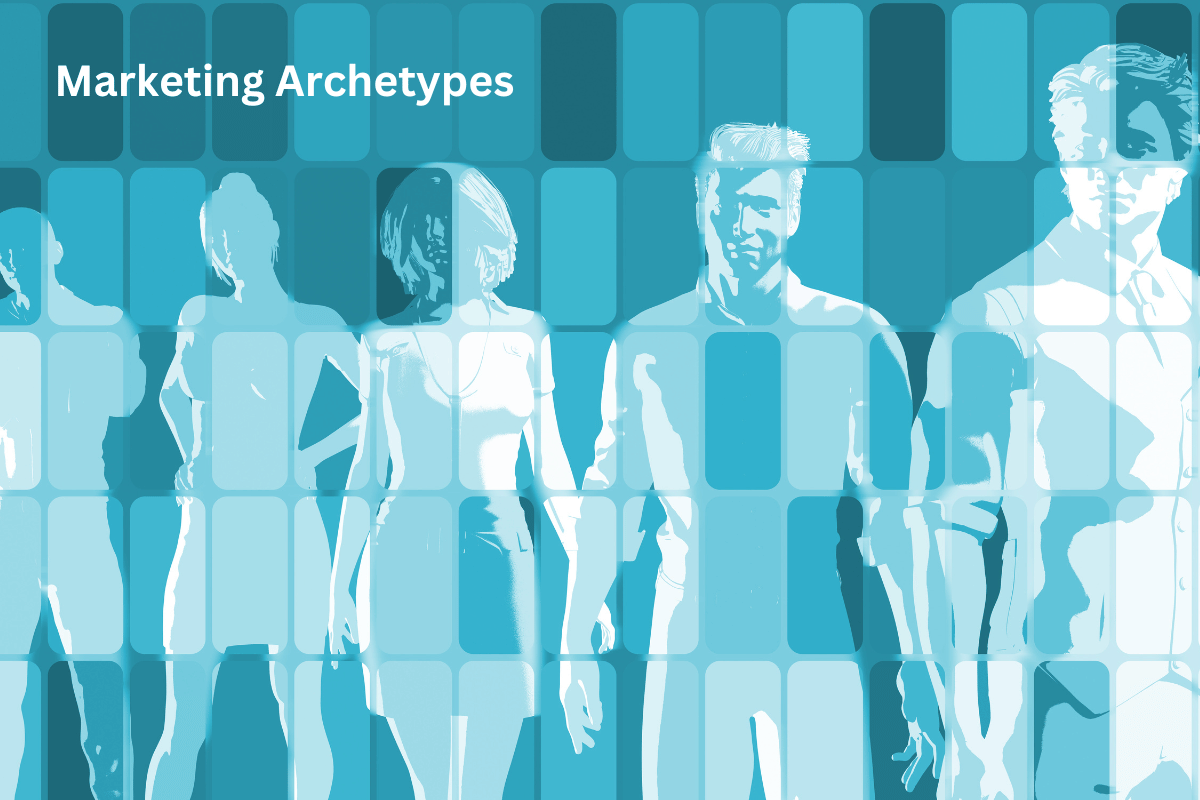Understanding the 12 Marketing Archetypes: A Guide to Targeted Branding
Marketing is not just about promoting products; it’s about connecting with your audience on a deeper, more emotional level. One of the most effective ways to achieve this connection is by leveraging marketing archetypes. Archetypes are universally recognized symbols, characters, or themes that resonate across cultures and time. When used in marketing, these archetypes can help brands craft powerful, memorable, and emotionally resonant messages that attract and retain customers.
In this article, we’ll explore what marketing archetypes are, why they are important, and how you can use them to create a strong brand identity and improve your marketing strategies.
What Are Marketing Archetypes?
At its core, an archetype is a model or a prototype that represents common human experiences. The concept of archetypes was first introduced by Swiss psychiatrist Carl Jung, who believed that these archetypes were embedded in our collective unconscious, manifesting through universal symbols, themes, and characters.
In marketing, these archetypes serve as a framework for developing brand personalities that align with the fundamental desires, motivations, and behaviors of target audiences. Each archetype embodies specific traits, values, and emotional triggers, enabling brands to connect with consumers in a way that feels authentic and relatable.
The 12 Primary Archetypes in Marketing
There are 12 primary archetypes that are commonly used in marketing, each with distinct characteristics and associated with particular customer needs:
- The Innocent
- Traits: Optimistic, pure, moral.
- Goal: To be happy and to do the right thing.
- Example: Dove, with its focus on natural beauty and self-care, embodies the Innocent archetype by promoting purity and positivity.
- The Sage
- Traits: Wisdom, knowledge, insight.
- Goal: To understand the world and teach others.
- Example: Google, with its mission to organize the world’s information, personifies the Sage through its emphasis on learning and discovery.
- The Explorer
- Traits: Freedom, adventure, self-discovery.
- Goal: To experience new things and escape the ordinary.
- Example: Jeep, which promotes the spirit of adventure and exploring the unknown, aligns with the Explorer archetype.
- The Outlaw
- Traits: Rebellion, disruption, non-conformity.
- Goal: To break the rules and challenge the status quo.
- Example: Harley-Davidson, known for its rebellious image, embodies the Outlaw archetype by appealing to those who resist authority.
- The Magician
- Traits: Transformation, vision, wonder.
- Goal: To create something special and make dreams come true.
- Example: Disney, which creates magical experiences through its entertainment, is a classic Magician archetype.
- The Hero
- Traits: Courage, strength, determination.
- Goal: To prove one’s worth through courageous acts.
- Example: Nike, which encourages people to push their limits and “just do it,” represents the Hero archetype.
- The Lover
- Traits: Passion, commitment, sensuality.
- Goal: To create intimate, meaningful relationships.
- Example: Chanel, with its focus on elegance and luxury, captures the essence of the Lover archetype.
- The Jester
- Traits: Fun, humor, light-heartedness.
- Goal: To live in the moment and enjoy life.
- Example: Old Spice, known for its humorous and quirky ads, is a good representation of the Jester archetype.
- The Everyman
- Traits: Belonging, relatability, groundedness.
- Goal: To connect with others and feel like part of a community.
- Example: IKEA, which offers practical solutions for everyday living, aligns with the Everyman archetype.
- The Caregiver
- Traits: Compassion, nurturing, generosity.
- Goal: To care for and protect others.
- Example: Johnson & Johnson, with its focus on family and healthcare, embodies the Caregiver archetype.
- The Ruler
- Traits: Leadership, control, power.
- Goal: To create a prosperous, successful community or organization.
- Example: Rolex, synonymous with luxury and high status, represents the Ruler archetype.
- The Creator
- Traits: Creativity, innovation, imagination.
- Goal: To create something of enduring value.
- Example: Lego, which encourages creativity and imagination in children, exemplifies the Creator archetype.
Why Are Marketing Archetypes Important?
Marketing archetypes are crucial because they provide a blueprint for building a consistent brand identity. They allow marketers to align their messaging, imagery, and overall strategy with the psychological motivations of their target audience. This alignment fosters a deeper emotional connection with consumers, which is essential for brand loyalty and long-term success.
Emotional Resonance
Archetypes tap into universal human emotions, making it easier for consumers to identify with and relate to a brand. This emotional resonance is a powerful tool for differentiation in a crowded marketplace. When consumers feel an emotional connection to a brand, they are more likely to develop loyalty and advocate for the brand within their social circles.
Consistency in Branding
A well-defined archetype provides a consistent framework for all brand communications, from advertising and social media to packaging and customer service. This consistency helps establish a recognizable and trustworthy brand image, which is critical for building customer trust and loyalty.
Strategic Storytelling
Archetypes serve as a foundation for compelling brand stories. A brand story rooted in a specific archetype can convey the brand’s values, mission, and personality in a way that resonates deeply with consumers. This storytelling approach makes marketing messages more engaging and memorable, enhancing the overall effectiveness of marketing campaigns.
How to Identify Your Brand’s Archetype
Identifying the right archetype for your brand is not a one-size-fits-all process. It requires a deep understanding of your brand’s mission, values, and the emotional needs of your target audience. Here’s how you can go about it:
1. Understand Your Audience
Start by gaining a deep understanding of your target audience. What are their core values? What motivates them? What are their biggest challenges and desires? By answering these questions, you can determine which archetype aligns with the emotional needs of your audience.
2. Reflect on Your Brand’s Core Values
Consider your brand’s mission, vision, and core values. What do you stand for? What message do you want to convey to your audience? Your brand’s values should closely align with the archetype you choose, as this will ensure authenticity in your marketing.
3. Analyze Competitors
Examine the archetypes that your competitors are using. This analysis can help you identify opportunities for differentiation. If most of your competitors are leaning towards a certain archetype, you might consider choosing a different one to stand out in the marketplace.
4. Test and Refine
Once you’ve identified a potential archetype, test it across different marketing channels to see how it resonates with your audience. Gather feedback, analyze engagement metrics, and refine your approach as needed to ensure that the chosen archetype is effective in building the desired brand perception.
Implementing Marketing Archetypes in Your Strategy
After identifying your brand’s archetype, the next step is to integrate it into your marketing strategy. Here’s how you can do that:
1. Craft a Brand Story
Use your archetype to craft a compelling brand story. This story should highlight how your brand embodies the traits of the archetype and how it meets the emotional needs of your audience. Make sure this story is consistent across all marketing channels.
2. Design Visual Identity
Your brand’s visual elements, such as logos, color schemes, and typography, should reflect your chosen archetype. For example, a brand aligned with the Hero archetype might use bold, dynamic colors and strong, assertive fonts, while a Lover archetype might opt for softer, more romantic visuals.
3. Align Your Messaging
Ensure that all your messaging—whether it’s in advertisements, social media posts, or customer service interactions—reflects the tone and personality of your archetype. This consistency will reinforce the emotional connection with your audience.
4. Engage Through Content Marketing
Create content that resonates with the emotional triggers associated with your archetype. For instance, if you’re using the Explorer archetype, your content might focus on themes of adventure, self-discovery, and breaking boundaries. This approach will help build a stronger connection with your audience and drive engagement.
5. Monitor and Adapt
As with any marketing strategy, it’s essential to monitor the performance of your archetype-driven campaigns. Use analytics tools to track engagement, brand sentiment, and conversion rates. Be prepared to adapt your approach based on these insights to continuously refine your brand’s positioning.
Examples of Successful Archetype Usage
Several global brands have successfully leveraged archetypes to create powerful brand identities:
- Nike (The Hero): Nike’s “Just Do It” campaign is a prime example of the Hero archetype, encouraging individuals to push their limits and achieve greatness.
- Apple (The Creator): Apple has consistently embodied the Creator archetype, focusing on innovation, creativity, and challenging the status quo.
- Coca-Cola (The Innocent): Coca-Cola’s branding often revolves around happiness, simplicity, and nostalgia, which aligns with the Innocent archetype.
- Harley-Davidson (The Outlaw): Harley-Davidson’s branding appeals to the rebellious spirit, making it a quintessential Outlaw brand.
These examples illustrate how effectively implementing an archetype can lead to a strong, distinctive brand presence that resonates with consumers on an emotional level.
Conclusion
Marketing archetypes are a powerful tool for creating a brand identity that resonates deeply with your target audience. By tapping into universal themes and emotions, archetypes enable brands to communicate more effectively, build stronger relationships with customers, and stand out in a crowded marketplace.
To leverage marketing archetypes effectively, it’s essential to understand your audience, reflect on your brand’s core values, and consistently integrate the chosen archetype into your marketing strategy. When done right, this approach can transform your brand into a powerful symbol that connects with consumers on a profound emotional level, driving long-term loyalty and success.







